Liste des articles



Vue 91 fois
02 mai 2018
Colloque « Intelligence Artificielle : fiction ou actions ? » : quelques lectures pour en savoir un peu plus sur l’histoire de l’IA
Publié par
Philippe Tassi
| Intelligence artificielle
Difficile d’être exhaustif lors d’un Colloque. Nous avons pensé, avec l’aide efficace du Professeur Gilbert Saporta, que quelques références bibliographiques pourraient compléter la vision de l’IA, au moins dans sa dimension historique. Les lignes qui suivent n’ont pas la prétention d’être exhaustives.
La période couverte va de 1845, et l’article du mathématicien belge Pierre François Verhulst, à la fin mars 2018 et la publication du rapport confié par le premier ministre français à Cédric Villani assisté d’une mission parlementaire.
Le Comité Editorial
A. Aizerman, E. M. Braverman, L. I. Rozonoer, [1964]. Method of potential functions in the problem on restoration of functional converter characteristic by means of points observed randomly”, Avtomat. i Telemekh., 25:12, 1705–1714
Aronszajn [1950]. Theory of reproducing kernels. Transactions of the American Mathematical Society, 68:337-404.
Berlinet and C. Thomas-Agnan [2004]. Reproducing kernel Hilbert spaces in probability and statistics, Springer.
E. Boser, I.M. Guyon, and V.N. Vapnik, [1992].A training algorithm for optimal margin classifiers. In: COLT ’92: Proceedings of the Fifth Annual Workshop on Computational Learning Theory. New York, NY, USA: ACM Press, pp. 144–152.
Breiman [2001]. Statistical modeling: The two cultures. Statistical Science, 16, 3, pp 199–215.
Chervonenkis [2013]. Early History of Support Vector Machines in B. Schölkopf et al. (eds.), Empirical Inference, Springer-Verlag, Berlin Heidelberg , pp 13-20
Conway, J. Siegelman. [2005]. Dark Hero of the Information Age: In Search of Norbert Wiener, the Father of Cybernetics, Basic Books; traduction française [2012]: Héros pathétique de l’age de l’information, en quête de Norbert Wiener, père de la cybernétique, Hermann
Cornuéjols, L. Miclet [2002]. Apprentissage artificiel : Concepts et algorithmes, Eyrolles.
T.M. Cover [1965]. Geometrical and statistical properties of systems of linear inequalities with applications in pattern recognition. IEEE Transactions on Electronic Computers, 14, pp 326-334.
J.S. Cramer [2003a]. Logit Models from Economics and Other Fields, Cambridge University Press
J.S. Cramer [2003b]. https://www.cambridge.org/resources/0521815886/1208_default.pdf
Donoho [2015]. 50 years of Data Science, Tukey Centennial workshop, https://dl.dropboxusercontent.com/u/23421017/50YearsDataScience.pdf
R.O. Duda and P.E. Hart [1973]. Pattern Classification and Scene Analysis. Wiley
France Stratégie et CNN [mars 2017]. Rapport « Anticiper les impacts économiques et sociaux de l’Intelligence Artificielle ».
Gammerman, V. Vovk [2015]. Alexey Chervonenkis’s Bibliography: Introductory Comments, Journal of Machine Learning Research 16, pp. 2051-2066
Guyon [2016]. Data Mining History: The Invention of Support Vector Machines, http://www.kdnuggets.com/2016/07/opinions-interviews.html
P. Horst et al. [1941]. The prediction of personal adjustment: A survey of logical problems and research techniques, with illustrative application to problems of vocational selection, school success, marriage, and crime, Social Science Research Council
W. Krauth, M. Mezard [1999]. Learning algorithms with optimal stability in neural networks. J. Phys. A 20, 745-752
A. Lachenbruch and M. R. Mickey [1968]. Estimation of error rates in discriminant analysis, Technometrics, vol. 10, no. 1, pp.1 -12,
McCulloch [1974]. Recollections of the Many Sources of Cybernetics, ASC FORUM Volume VI, Number 2 -Summer
McFadden [1974]. Conditional Logit Analysis of Qualitative Choice Behavior, in P. Zarembka (ed.), Frontiers in Econometrics, 105-142, Academic Press
O.L. Mangasarian [1965]. Linear and nonlinear separation of patterns by linear programming. Operations Research , 13:444-452
Minsky, S. Papert [1969]. Perceptrons: An Introduction to Computational Geometry, MIT Press
V.N. Novoseltsev [2015]. Institute of Control Sciences through the lens of VC dimension. In Measures of Complexity: Festschrift for Alexey Chervonenkis, chapter 5, pp 43–53. Springer, Berlin
Olshen [2001]. A Conversation with Leo Breiman, Statistical Science, 16, 2, pp 184–198
OPECST (Office parlementaire d’évaluation des choix scientifiques et technologiques) [mars 2017]. Rapport « Pour une intelligence artificielle maîtrisée, utile et démystifiée »
Platt [1999]. Probabilistic outputs for support vector machines and comparisons to regularized likelihood methods in A. Smola et al. editors, Advances in large margin classifiers. MIT Press
Rosenblatt [1957]. The Perceptron, a Perceiving and Recognizing Automaton, Cornell Aeronautical Laboratory Report No. 85-460-1
Rosenblatt [1962]. Principles of Neurodynamics, Spartan
Saporta [2008]. Models for Understanding versus Models for Prediction, In P.Brito, ed., Compstat Proceedings, Physica Verlag, 315-322
Schölkopf et al.(eds) [2013]. Empirical Inference, Festschrift in Honor of Vladimir N. Vapnik, Springer 2013
Shmueli [2010]. To explain or to predict? Statistical Science, 25, 289–310
F.W. Smith [1968]. Pattern classifier design by linear programming. IEEE Transactions on Computers, C-17:367--372
Stone [1974]. Cross-validatory choice and assessment of statistical predictions. J. Royal Stat. Soc., 36(2), 111147
Theil [1969]. A multinomial extension of the linear logit model. International Economic Review 10, pp 251-259.
Vapnik and A. Lerner [1963]. Pattern recognition using generalized portrait method. Automation and Remote Control, 24.
Vapnik and A. Chervonenkis [1968]. Uniform convergence of frequencies of occurrence of events to their probabilities. Soviet Mathematics Doklady, 9 (4):915–918.
Vapnik, et A. Cervonenkis [1974]. Teoriya raspoznavaniya obrazov: Statisticheskie problemy obucheniya. (Russian) [Theory of pattern recognition: Statistical problems of learning]. Moscow: Nauka
Vapnik [1979]. Estimation of Dependences Based on Empirical Data [in Russian]. Moscow: Nauka. ; Traduction anglaise, Springer 1982
Vapnik [1995]. Statistical learning theory, Wiley.
Vapnik [2000]. The Nature of Statistical learning theory, 2nd edition, Springer
Vapnik [2006]. Estimation of Dependences Based on Empirical Data, 2nd edition, Springer
Varian [2014]. Big Data: New Tricks for Econometrics, Journal of Economic Perspectives, 28, 2, pp.3–28
P.F. Verhulst [1845]. Recherches mathématiques sur la loi d'accroissement de la population, Nouveaux Mémoires de l'Académie Royale des Sciences et Belles-Lettres de Bruxelles, no 18,? p. 1-42
Villani [mars 2018]. Rapport “Donner un sens à l’intelligence artificielle”
Vovk et al (eds) [2015]. Measures of Complexity, Festschrift for Alexey Chervonenkis, Springer
von Neumann [1945]. First Draft of a Report on the EDVAC, University of Pennsylvania. Moore School of Electrical Engineering, University of Pennsylvania.
Wiener [1948]. Cybernetics or Control and Communication in the Animal and the Machine, Paris, (Hermann & Cie) & Cambridge. Mass. (MIT Press)
La période couverte va de 1845, et l’article du mathématicien belge Pierre François Verhulst, à la fin mars 2018 et la publication du rapport confié par le premier ministre français à Cédric Villani assisté d’une mission parlementaire.
Le Comité Editorial
Références bibliographiques
Agresti, C.A. Franklin [2013]. Statistics: The Art and Science of Learning from Data, 3rd Edition, PearsonA. Aizerman, E. M. Braverman, L. I. Rozonoer, [1964]. Method of potential functions in the problem on restoration of functional converter characteristic by means of points observed randomly”, Avtomat. i Telemekh., 25:12, 1705–1714
Aronszajn [1950]. Theory of reproducing kernels. Transactions of the American Mathematical Society, 68:337-404.
Berlinet and C. Thomas-Agnan [2004]. Reproducing kernel Hilbert spaces in probability and statistics, Springer.
E. Boser, I.M. Guyon, and V.N. Vapnik, [1992].A training algorithm for optimal margin classifiers. In: COLT ’92: Proceedings of the Fifth Annual Workshop on Computational Learning Theory. New York, NY, USA: ACM Press, pp. 144–152.
Breiman [2001]. Statistical modeling: The two cultures. Statistical Science, 16, 3, pp 199–215.
Chervonenkis [2013]. Early History of Support Vector Machines in B. Schölkopf et al. (eds.), Empirical Inference, Springer-Verlag, Berlin Heidelberg , pp 13-20
Conway, J. Siegelman. [2005]. Dark Hero of the Information Age: In Search of Norbert Wiener, the Father of Cybernetics, Basic Books; traduction française [2012]: Héros pathétique de l’age de l’information, en quête de Norbert Wiener, père de la cybernétique, Hermann
Cornuéjols, L. Miclet [2002]. Apprentissage artificiel : Concepts et algorithmes, Eyrolles.
T.M. Cover [1965]. Geometrical and statistical properties of systems of linear inequalities with applications in pattern recognition. IEEE Transactions on Electronic Computers, 14, pp 326-334.
J.S. Cramer [2003a]. Logit Models from Economics and Other Fields, Cambridge University Press
J.S. Cramer [2003b]. https://www.cambridge.org/resources/0521815886/1208_default.pdf
Donoho [2015]. 50 years of Data Science, Tukey Centennial workshop, https://dl.dropboxusercontent.com/u/23421017/50YearsDataScience.pdf
R.O. Duda and P.E. Hart [1973]. Pattern Classification and Scene Analysis. Wiley
France Stratégie et CNN [mars 2017]. Rapport « Anticiper les impacts économiques et sociaux de l’Intelligence Artificielle ».
Gammerman, V. Vovk [2015]. Alexey Chervonenkis’s Bibliography: Introductory Comments, Journal of Machine Learning Research 16, pp. 2051-2066
Guyon [2016]. Data Mining History: The Invention of Support Vector Machines, http://www.kdnuggets.com/2016/07/opinions-interviews.html
P. Horst et al. [1941]. The prediction of personal adjustment: A survey of logical problems and research techniques, with illustrative application to problems of vocational selection, school success, marriage, and crime, Social Science Research Council
W. Krauth, M. Mezard [1999]. Learning algorithms with optimal stability in neural networks. J. Phys. A 20, 745-752
A. Lachenbruch and M. R. Mickey [1968]. Estimation of error rates in discriminant analysis, Technometrics, vol. 10, no. 1, pp.1 -12,
McCulloch [1974]. Recollections of the Many Sources of Cybernetics, ASC FORUM Volume VI, Number 2 -Summer
McFadden [1974]. Conditional Logit Analysis of Qualitative Choice Behavior, in P. Zarembka (ed.), Frontiers in Econometrics, 105-142, Academic Press
O.L. Mangasarian [1965]. Linear and nonlinear separation of patterns by linear programming. Operations Research , 13:444-452
Minsky, S. Papert [1969]. Perceptrons: An Introduction to Computational Geometry, MIT Press
V.N. Novoseltsev [2015]. Institute of Control Sciences through the lens of VC dimension. In Measures of Complexity: Festschrift for Alexey Chervonenkis, chapter 5, pp 43–53. Springer, Berlin
Olshen [2001]. A Conversation with Leo Breiman, Statistical Science, 16, 2, pp 184–198
OPECST (Office parlementaire d’évaluation des choix scientifiques et technologiques) [mars 2017]. Rapport « Pour une intelligence artificielle maîtrisée, utile et démystifiée »
Platt [1999]. Probabilistic outputs for support vector machines and comparisons to regularized likelihood methods in A. Smola et al. editors, Advances in large margin classifiers. MIT Press
Rosenblatt [1957]. The Perceptron, a Perceiving and Recognizing Automaton, Cornell Aeronautical Laboratory Report No. 85-460-1
Rosenblatt [1962]. Principles of Neurodynamics, Spartan
Saporta [2008]. Models for Understanding versus Models for Prediction, In P.Brito, ed., Compstat Proceedings, Physica Verlag, 315-322
Schölkopf et al.(eds) [2013]. Empirical Inference, Festschrift in Honor of Vladimir N. Vapnik, Springer 2013
Shmueli [2010]. To explain or to predict? Statistical Science, 25, 289–310
F.W. Smith [1968]. Pattern classifier design by linear programming. IEEE Transactions on Computers, C-17:367--372
Stone [1974]. Cross-validatory choice and assessment of statistical predictions. J. Royal Stat. Soc., 36(2), 111147
Theil [1969]. A multinomial extension of the linear logit model. International Economic Review 10, pp 251-259.
Vapnik and A. Lerner [1963]. Pattern recognition using generalized portrait method. Automation and Remote Control, 24.
Vapnik and A. Chervonenkis [1968]. Uniform convergence of frequencies of occurrence of events to their probabilities. Soviet Mathematics Doklady, 9 (4):915–918.
Vapnik, et A. Cervonenkis [1974]. Teoriya raspoznavaniya obrazov: Statisticheskie problemy obucheniya. (Russian) [Theory of pattern recognition: Statistical problems of learning]. Moscow: Nauka
Vapnik [1979]. Estimation of Dependences Based on Empirical Data [in Russian]. Moscow: Nauka. ; Traduction anglaise, Springer 1982
Vapnik [1995]. Statistical learning theory, Wiley.
Vapnik [2000]. The Nature of Statistical learning theory, 2nd edition, Springer
Vapnik [2006]. Estimation of Dependences Based on Empirical Data, 2nd edition, Springer
Varian [2014]. Big Data: New Tricks for Econometrics, Journal of Economic Perspectives, 28, 2, pp.3–28
P.F. Verhulst [1845]. Recherches mathématiques sur la loi d'accroissement de la population, Nouveaux Mémoires de l'Académie Royale des Sciences et Belles-Lettres de Bruxelles, no 18,? p. 1-42
Villani [mars 2018]. Rapport “Donner un sens à l’intelligence artificielle”
Vovk et al (eds) [2015]. Measures of Complexity, Festschrift for Alexey Chervonenkis, Springer
von Neumann [1945]. First Draft of a Report on the EDVAC, University of Pennsylvania. Moore School of Electrical Engineering, University of Pennsylvania.
Wiener [1948]. Cybernetics or Control and Communication in the Animal and the Machine, Paris, (Hermann & Cie) & Cambridge. Mass. (MIT Press)
Auteur

Philippe est directeur général adjoint de Médiamétrie, acteur incontournable de la mesure d’audience en France et en Europe. En parallèle à cette carrière, Philippe a conduit des activités de recherche et d’enseignement au CEPE, à l’ENSAE et à l’ENSAI. Il est également l'auteur de nombreux ouvrages en théorie et méthodes statistiques, en marketing décisionnel et en théorie des sondages, qui ont accompagné des générations d'anciens élèves...
Voir les 26 Voir les autres publications de l’auteur(trice)













Aucun commentaire
Vous devez être connecté pour laisser un commentaire. Connectez-vous.